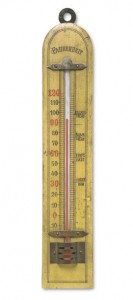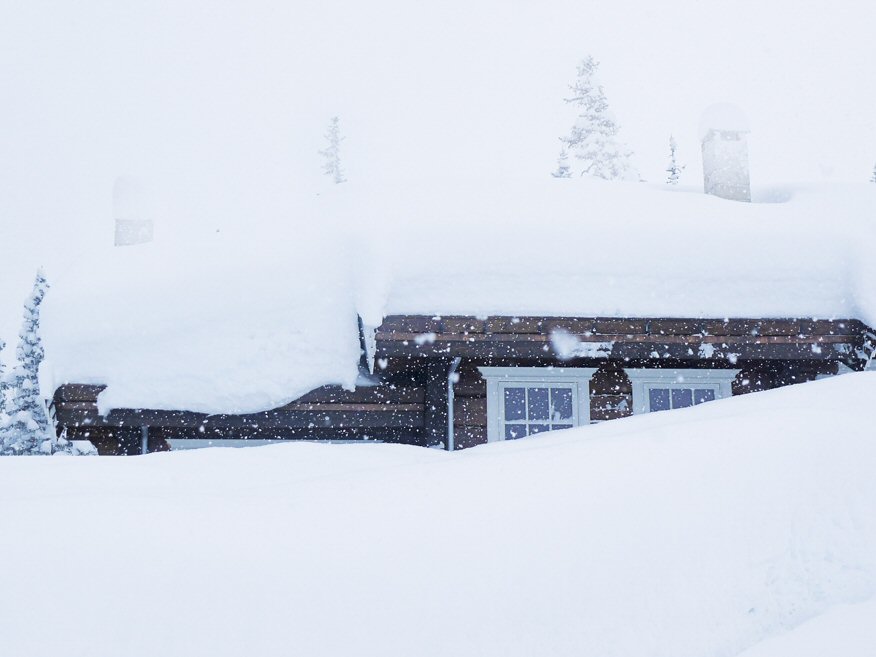Adverse conditions need not deliver a negative financial impact, thanks to protections offered by weather insurance
For much of the United States, the winter of 2015-2016 was relatively easy to handle, especially when compared to the previous year. For example, the end of February this year saw just 15% of the total land area of the 48 contiguous states covered by snow. Exactly a year earlier, the percentage topped 60.
Just outside of Boston, Christine Ingraham experienced the year-to-year difference first-hand. “This winter seemed like ‘shorts and sandals’ weather after last year, when we were all but home-bound for weeks thanks to record snow,” she explains. Average snow depth for the Northeastern United States as of February 28, 2016 was just 4.3”—a fraction of the nearly two-foot regional average the prior year. The region, as defined by the National Weather Service, includes most of New England and the eastern portion of upstate New York.
Ingraham pays attention to weather, not just because she’s a New Englander—although that’s probably reason enough. She also serves as senior vice president and market segment specialist at WKFC Underwriting Managers. “Weather affects all of us in some way, regardless of where we live or work or what kind of work we do,” she explains. “It’s a universal topic—perhaps the one that’s most commonly discussed among strangers. It brings beauty, of course, but more often than not, it brings hardship, or at least hindrance.”
That’s where her firm, part of RSG Underwriting Managers, and others like it come in—insuring against weather-driven hardships. “At one point, perhaps, weather insurance was considered one of the most unique and underutilized coverages out there, but weather underwriters are watching the tides turn once again,” she says, noting the increased interest in and use of weather-related business income protection insurance.
Events covered
“Clients are depending on insurance more than ever before to address weather risk—everything from rainfall, snow and lightning to strong winds, extreme temperatures and more,” Ingraham adds.
According to Regina Miller, contingency lines underwriter at WKFC, weather insurance can be used for everything from cost containment to income stabilization to revenue protection—and even sales promotions. “There are so many areas where weather can affect organizations and their activities,” she explains. “Weather insurance is a way to help manage those effects and the risks the entities may face.”
Special events are among the more common areas where weather insurance comes into play. “Events, of course, are designed to bring people together—to unite groups and communities,” Ingraham explains. “Too often, though, they’re being impacted by rainfall, thunderstorms and even more severe life-threatening weather-related events.”
Short-term special events—like festivals, sporting events, conferences, parades and concerts, for example—are frequently covered using rain insurance policies. “Whether the event is curtailed or cancelled, revenue loss from a specific weather peril can be insured,” Miller notes. Policy periods are determined by the insured at time of application, and industry standards generally require at least 7-10 days in advance of the cover age period.
It’s important to make sure customers understand what triggers a claim payment—more specifically, how claims are verified. Depending on the carrier and policy, options can include measuring rainfall at the nearest National Weather Service station, use of a third-party Doppler radar system to record weather at the location, or use of a credentialed and underwriter-approved on-site weather observer. Customers need to know that readings can vary dramatically between the event location and the nearest weather station.
Seasonal approach
Some organizations use seasonal policies, as opposed to short-term events-based coverage, to address weather risks. “Seasonal rainfall contracts are commonplace for certain industries and organizations,” Ingraham explains. These could include haunted houses, Christmas-time events and other situations where the risk of lost revenue lasts more than a few days.
“Seasonally-dependent clients are particularly at risk,” she notes. “For example, rainy pockets in October could be detrimental to Halloween-related venues and snowfall on weekends in late November or throughout December could cut into revenue for, say, a Polar Express-type rail attraction.”
Income stabilization isn’t limited to events. Restaurants and bars, public golf courses, sports venues, amusement parks, casinos, and other entertainment and recreation facilities often use weather insurance to address potential loss of income resulting from adverse conditions—generally the presence of rain or snow that would cause a drop in patronage.
Too much precipitation doesn’t just affect revenue. It also can boost expenses. Don’t fret: weather insurance comes into play then, too, and even when it’s too hot or too cold. Cost containment programs help limit costs associated with unusual weather. For instance, airports, municipalities, sports complexes and arenas, schools, hospitals, commercial real estate owners and managers and others may tap weather insurance to protect against added plowing expenses or against abnormally high building heating or cooling costs.
Some businesses use weather insurance to address the lack of precipitation—in particular, snow. “It’s not uncommon to find, for example, snow removal contractors who want to be sure that their revenue is not negatively affected in winters like the one we just had here in New England,” Ingraham notes. Businesses that rely on traffic to winter-weather locales also are prime candidates for weather-based income stabilization coverage.
Miller says weather insurance contracts—whether short-term or covering a longer period of time—are tailored for the needs of each client. “For example, it may make sense to design coverage periods to address spikes in revenue on weekends only, depending on the nature of the business and the times when it’s busiest,” she notes. “Or you may want to vary coverage limits to address weekday exposures versus those on the weekend—again based on revenue expectations.”
Making the sale
According to Ingraham, “This year, in particular, we’ve been finding that clients are still recovering from previously uninsured situational losses.” It may help for agents and brokers to remind customers of the variations in weather over the past few years as a way to highlight the value proposition of weather insurance.
“Clients are depending on insurance more than ever before to address weather risk—everything from rainfall, snow and lightning to strong winds, extreme temperatures and more.”
—Christine Ingraham
Senior Vice President and Market Segment Specialist
WKFC Underwriting Managers
She points out that the coverage can be a good fit for a wide range of businesses and organizations. “Enterprises from restaurants, sporting arenas and casinos to snow removal contractors and municipalities—even aquariums and zoos—are good prospects,” she explains. “Each of these depends on weather insurance today to manage expenses and revenue flow affected by weather.”
For example, Ingraham notes, “Zoos, which once were known mainly for animal attractions, have expanded operations to include elaborate food and beverage concessions, rides, day camps, and special events, such as charity entertainment, throughout the entire year. Expenses typically are fully incurred and they won’t be offset by lost revenue in the event of a rainy season.”
Miller points out that weather insurance contracts set valuation on an agreed-value basis. “That differs from policies that cover actual loss sustained and traditional property forms that require property damage in order to trigger business income loss,” she explains.
“Contracts for weather insurance have a set coverage period and set limit,” Miller adds. “As long as the specified peril is triggered during the set coverage period, the limit applies, without additional claims valuation.”
According to Ingraham, “Weather insurance can fill gaps in coverage for business income that traditional policies simply don’t address, eliminating the strain and overall impact of unforeseen weather is the key. Self-insured retentions vary from client to client. Having the flexibility to address on a risk-by-risk basis is a winning solution for both producer and client.
“Product education and knowledge are, for the most part, the only obstacles between proper coverage and the at-risk client,” she adds. “Once an agent or broker takes time to understand the product, cross-selling to existing property and casualty clients is rather straightforward. There’s ample capacity to address their risks.
“Thought leadership is what drives producer-client relationships,” Ingraham notes. “Providing the best available insurance tools to address risk on a case-by-case basis is critical to serving existing clients and growing your business.
“Demonstrating prowess in handling unique risks is a great way for independent agents to excel in a competitive environment,” she concludes.
 Excitement around weather
Excitement around weather
In addition to business income stabilization and cost containment, weather insurance can be used to help promote a business. Tying promotionsto the weather is an effective and cost-efficient way for retailers in a wide range of businesses to gain attention, generate traffic and increase sales.
Here’s how it works: The retailer advertises and promotes the sale of its product, whatever it is, during a certain period of time, and then offers to rebate some or all of the purchase price to buyers if a certain weather condition occurs on a specific future date.
For example, an electronics store may run a promotion up to and including Black Friday or Thanksgiving weekend, announcing that purchases will be “free” if it snows a certain amount on Christmas Day.
An electronics/furniture store may take the same approach, but promote sales—of big-screen TVs or other products—through the month of December or early January and then tie the rebate to weather during the Super Bowl.
Jewelers often run such promotions, and some also single out wedding shoppers with a unique value proposition: They offer a rebate or “free” rings if it rains on the newlyweds’ pre-defined wedding day.
Car dealers might want to close out their Memorial Day or end-of-spring sales with a promotion that’s triggered by record high temperatures on the Fourth of July. Home contractors could run a similar promotion leading up to their busy season.
Weather insurance, of course, is the mechanism that allows retailers to reimburse customers for their purchases. Such promotions are easy to run and are very effective. Insuring them is straight-forward, as well. It just takes some creativity and a willing market.
By Dave Willis, CPIA






